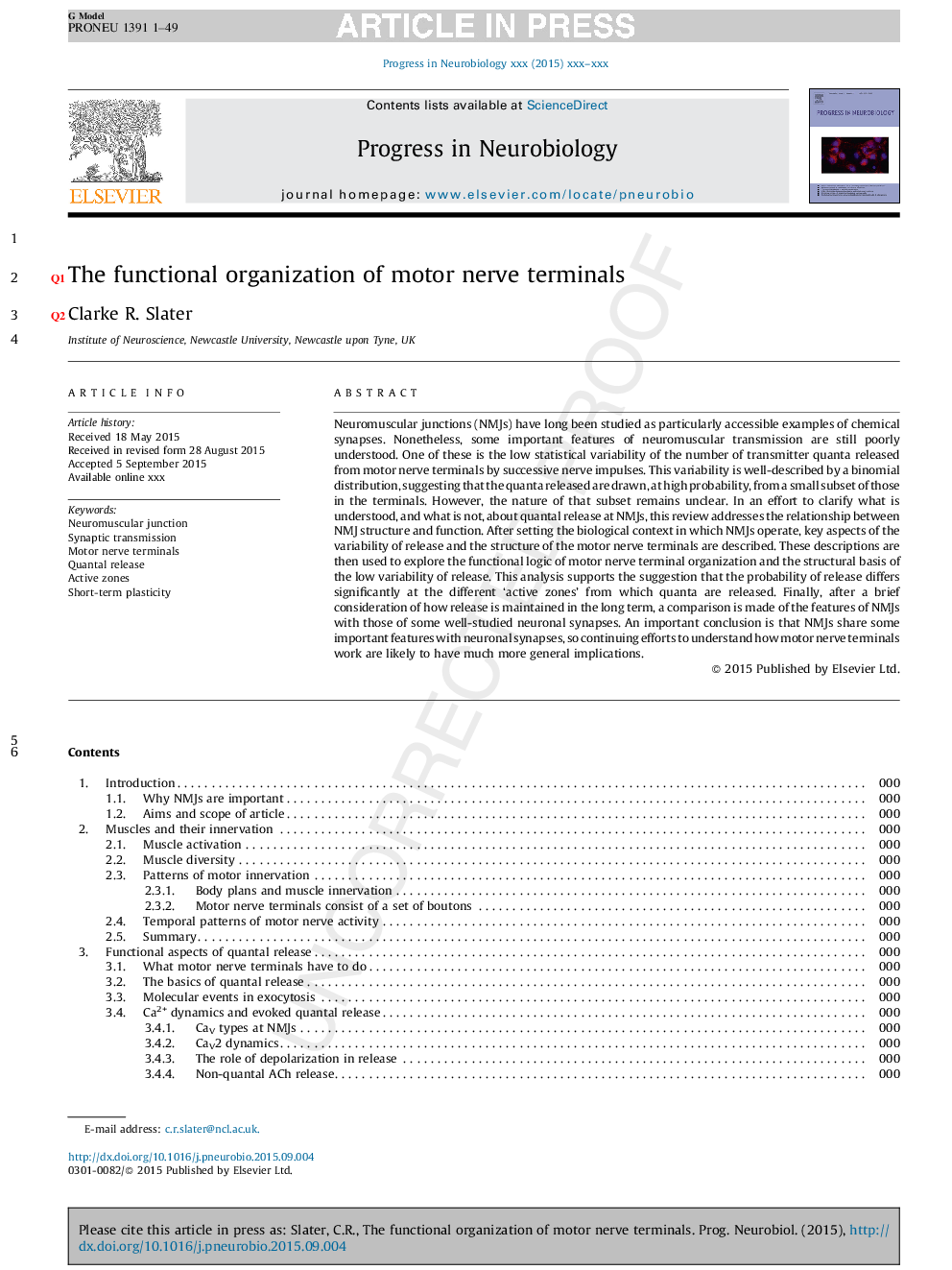| کد مقاله | کد نشریه | سال انتشار | مقاله انگلیسی | نسخه تمام متن |
|---|---|---|---|---|
| 6286463 | 1615377 | 2015 | 49 صفحه PDF | دانلود رایگان |
عنوان انگلیسی مقاله ISI
The functional organization of motor nerve terminals
ترجمه فارسی عنوان
سازماندهی عملکردی پایانه های عصبی حرکتی
دانلود مقاله + سفارش ترجمه
دانلود مقاله ISI انگلیسی
رایگان برای ایرانیان
کلمات کلیدی
CAVmEPPRRPmEPCendplate currentminiature endplate currentEPCSNAREAChRNMJEPPSVDACh - آهNeuromuscular junction - اتصال عصبی عضلانیAcetylcholine - استیل کولینQuantal release - انتشار کوانتالsynaptic transmission - انتقال سیناپسیreadily releasable pool - به راحتی استخر آزادCNS - دستگاه عصبی مرکزیcentral nervous system - سیستم عصبی مرکزیActive zones - مناطق فعالActive zone - منطقه فعالNav - نهsynaptic vesicle - واژینال سیناپسیMotor nerve terminals - پایانه های عصبی موتورminiature endplate potential - پتانسیل اندیکاتور مینیاتوریendplate potential - پتانسیل پایان دادن بهShort-term plasticity - پلاستیک کوتاه مدتvoltage-gated sodium channel - کانال سدیم ولتاژvoltage-gated calcium channel - کانال کلسیم با ولتاژacetylcholine receptor - گیرنده استیل کولین
موضوعات مرتبط
علوم زیستی و بیوفناوری
علم عصب شناسی
علوم اعصاب (عمومی)
چکیده انگلیسی
Neuromuscular junctions (NMJs) have long been studied as particularly accessible examples of chemical synapses. Nonetheless, some important features of neuromuscular transmission are still poorly understood. One of these is the low statistical variability of the number of transmitter quanta released from motor nerve terminals by successive nerve impulses. This variability is well-described by a binomial distribution, suggesting that the quanta released are drawn, at high probability, from a small subset of those in the terminals. However, the nature of that subset remains unclear. In an effort to clarify what is understood, and what is not, about quantal release at NMJs, this review addresses the relationship between NMJ structure and function. After setting the biological context in which NMJs operate, key aspects of the variability of release and the structure of the motor nerve terminals are described. These descriptions are then used to explore the functional logic of motor nerve terminal organization and the structural basis of the low variability of release. This analysis supports the suggestion that the probability of release differs significantly at the different 'active zones' from which quanta are released. Finally, after a brief consideration of how release is maintained in the long term, a comparison is made of the features of NMJs with those of some well-studied neuronal synapses. An important conclusion is that NMJs share some important features with neuronal synapses, so continuing efforts to understand how motor nerve terminals work are likely to have much more general implications.
ناشر
Database: Elsevier - ScienceDirect (ساینس دایرکت)
Journal: Progress in Neurobiology - Volume 134, November 2015, Pages 55-103
Journal: Progress in Neurobiology - Volume 134, November 2015, Pages 55-103
نویسندگان
Clarke R. Slater,
